


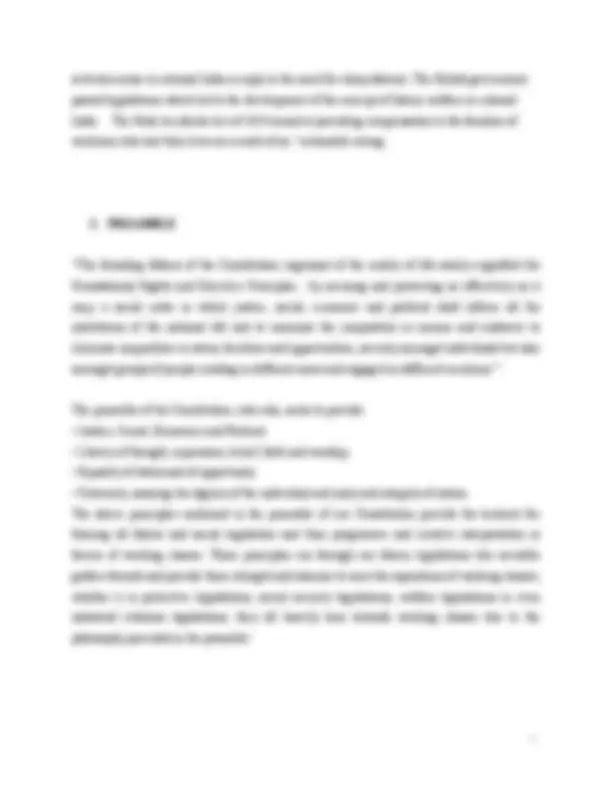

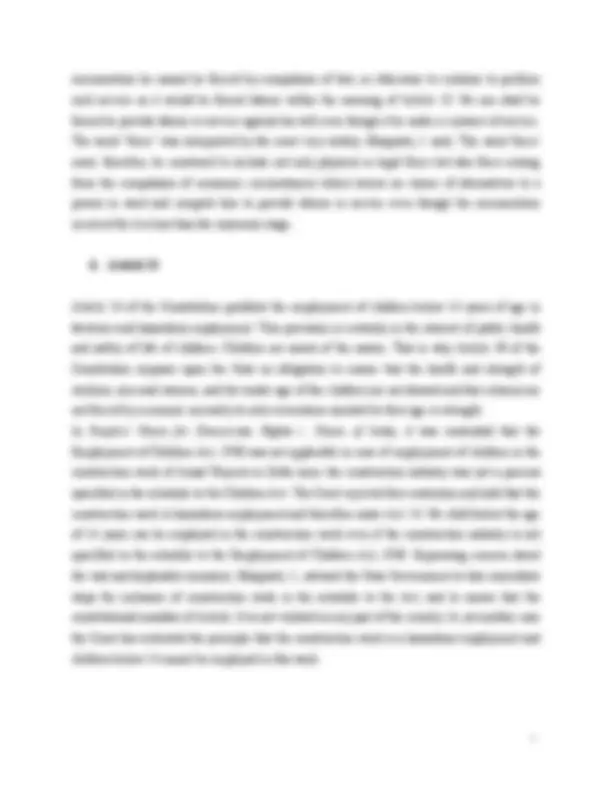

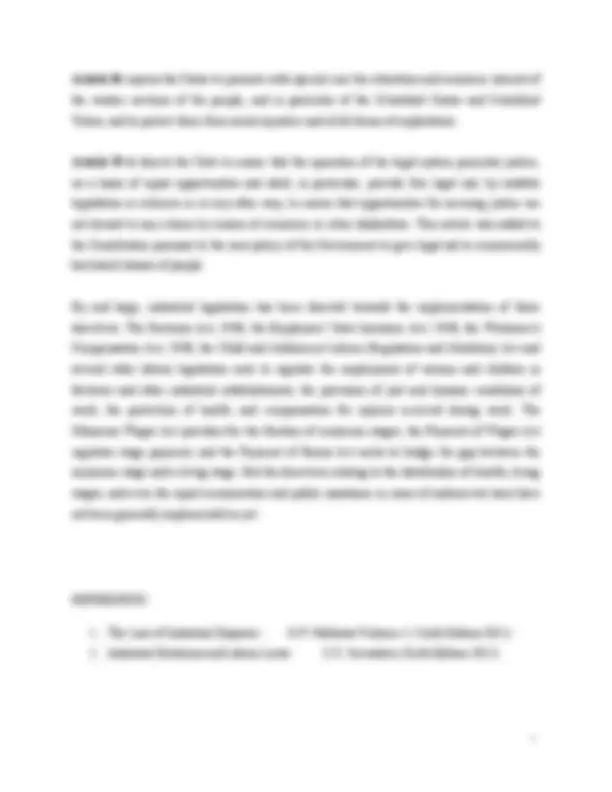
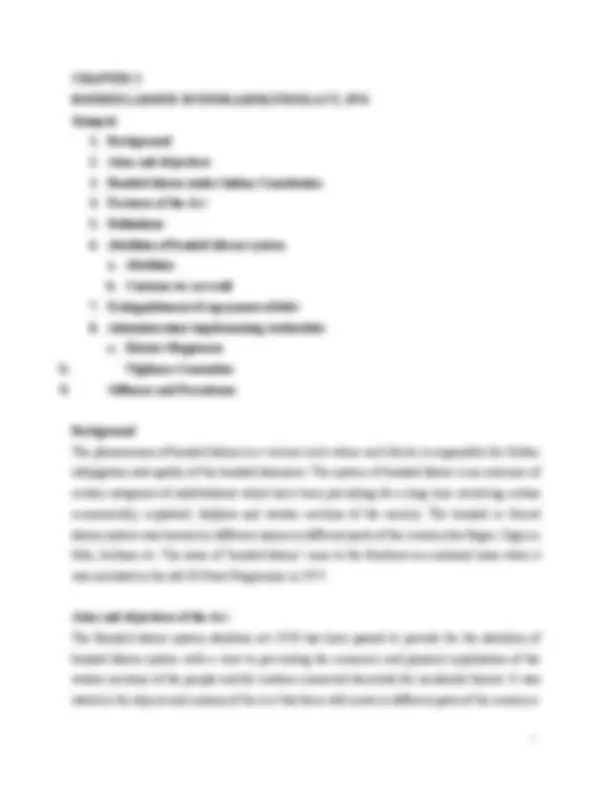
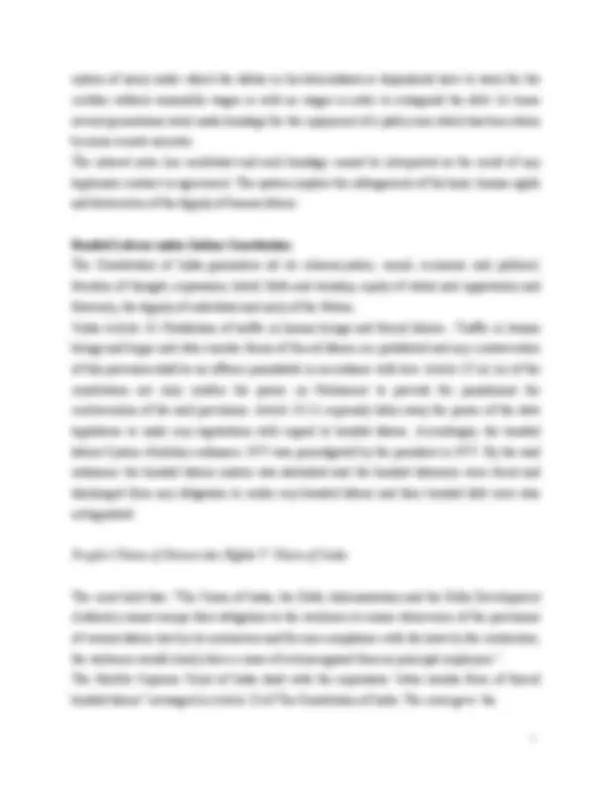


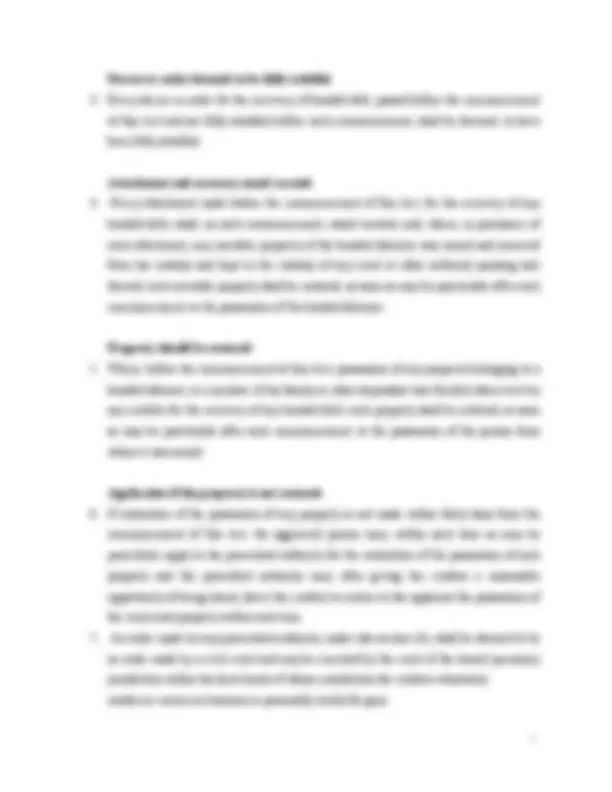
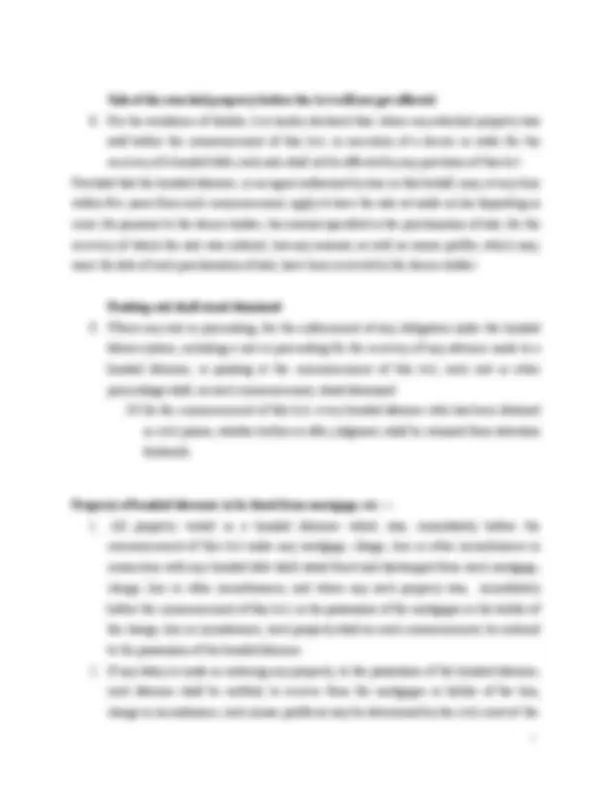
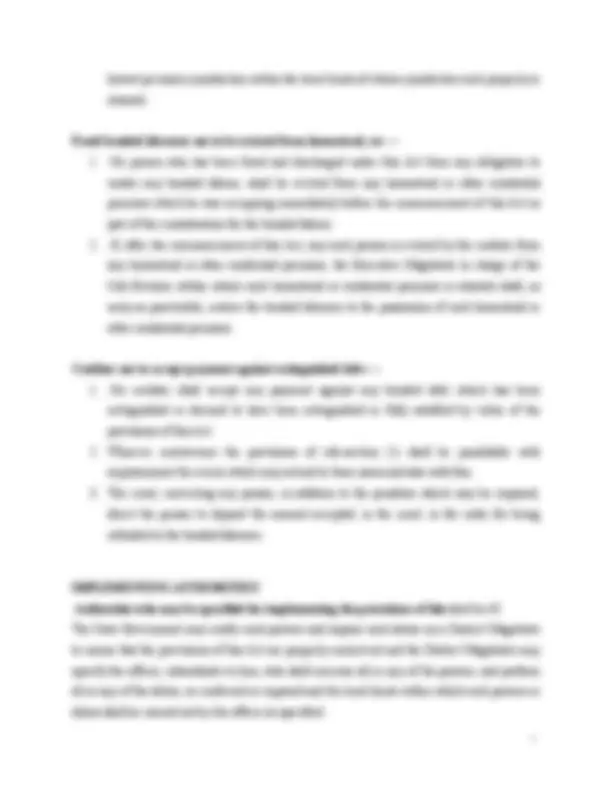

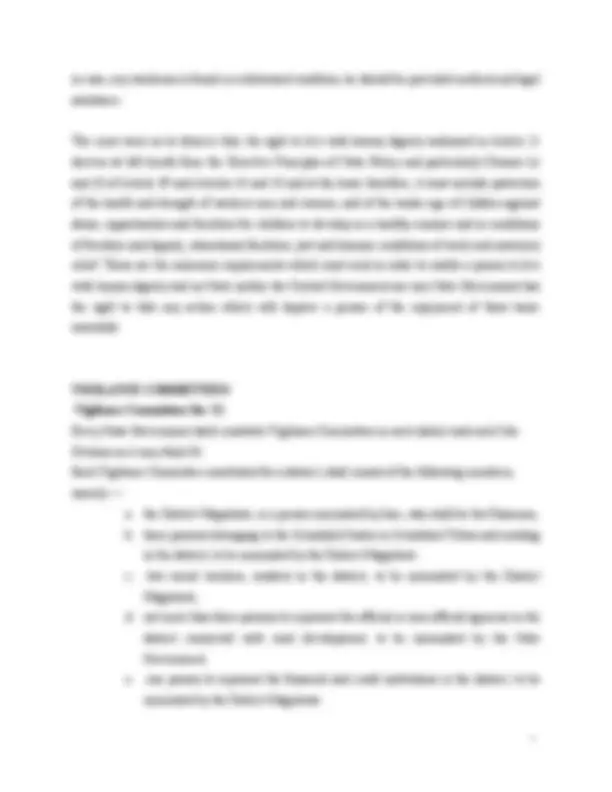

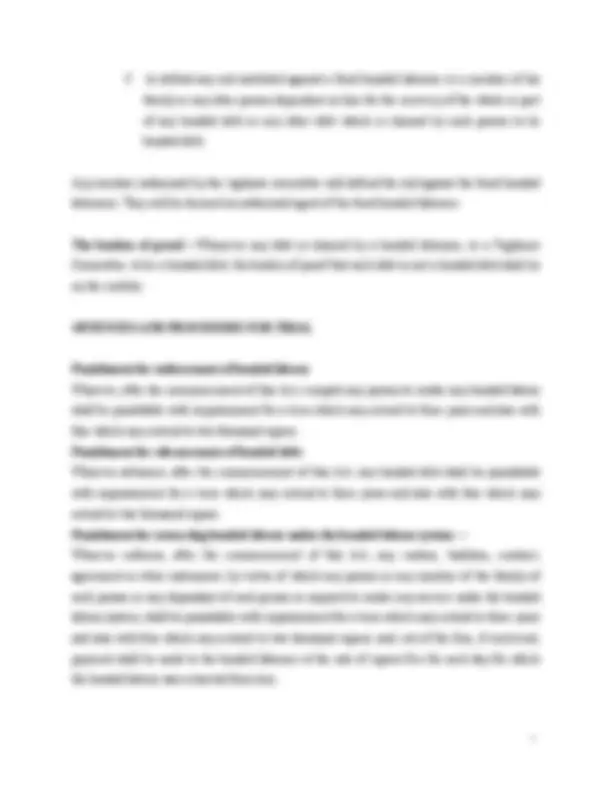





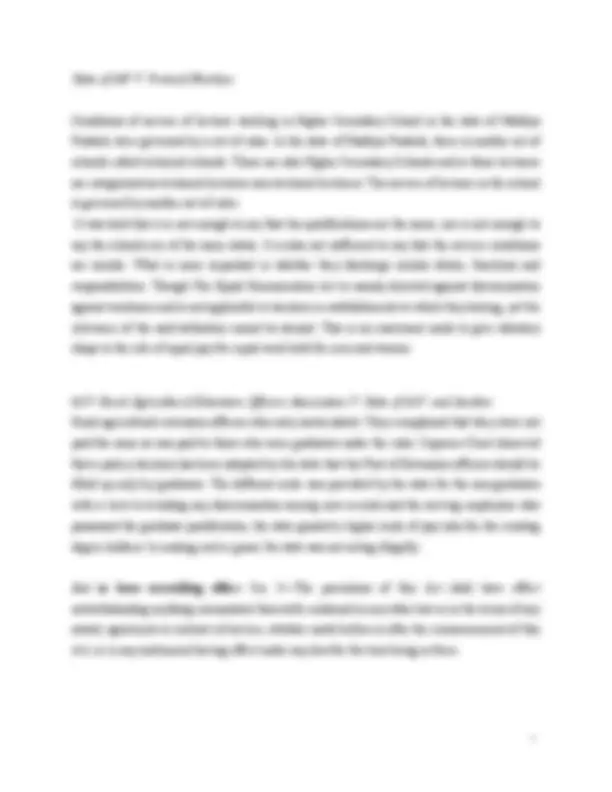







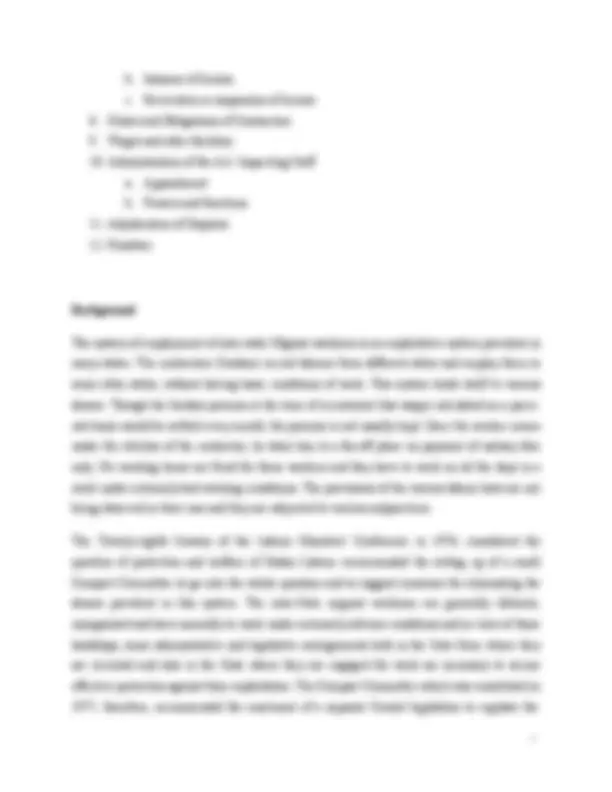


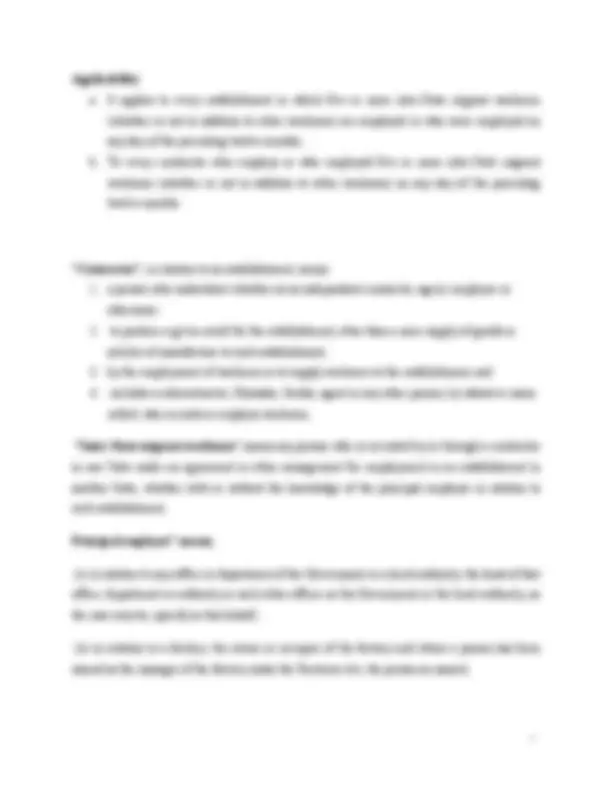









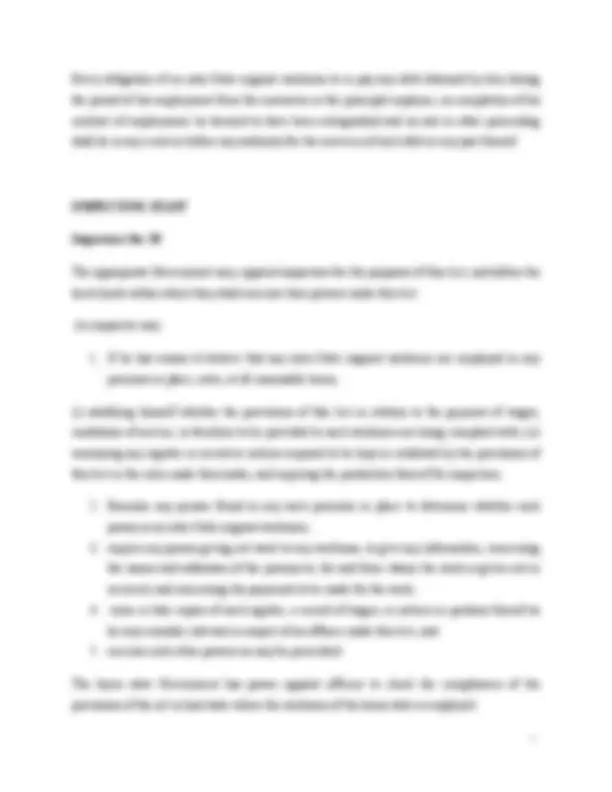

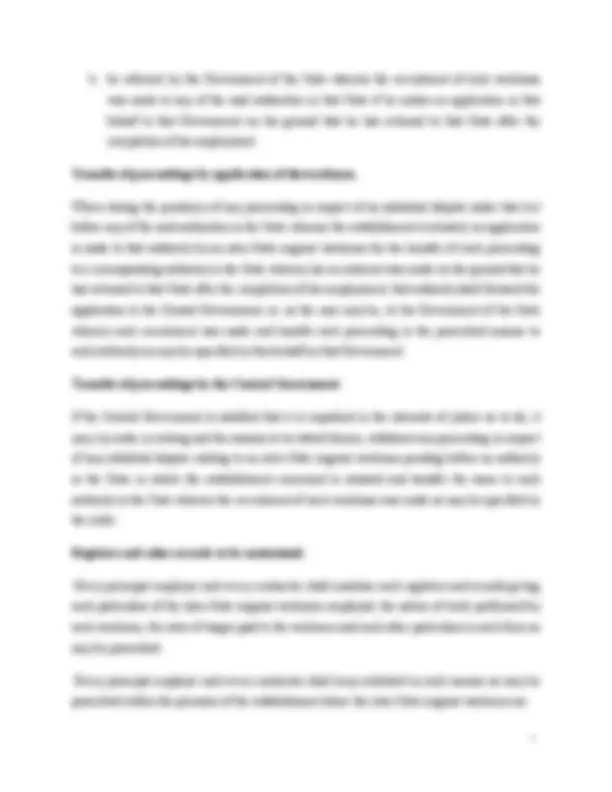
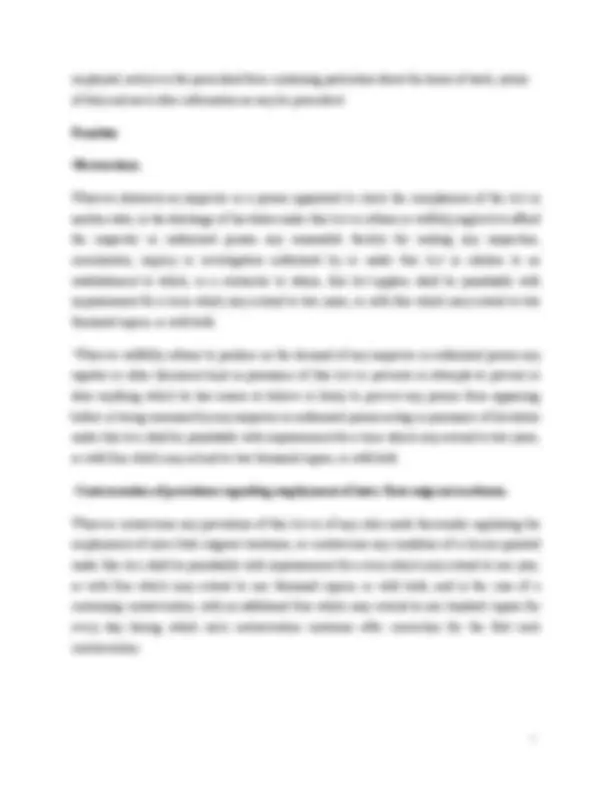


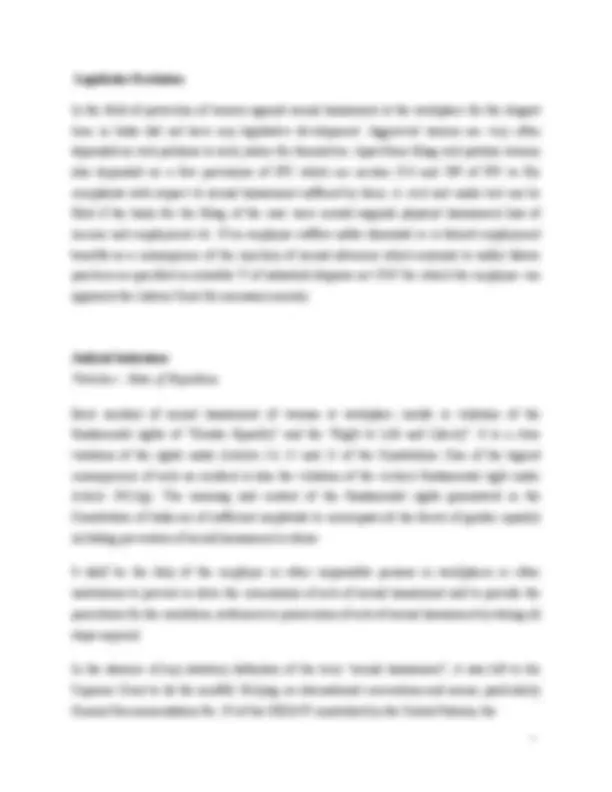



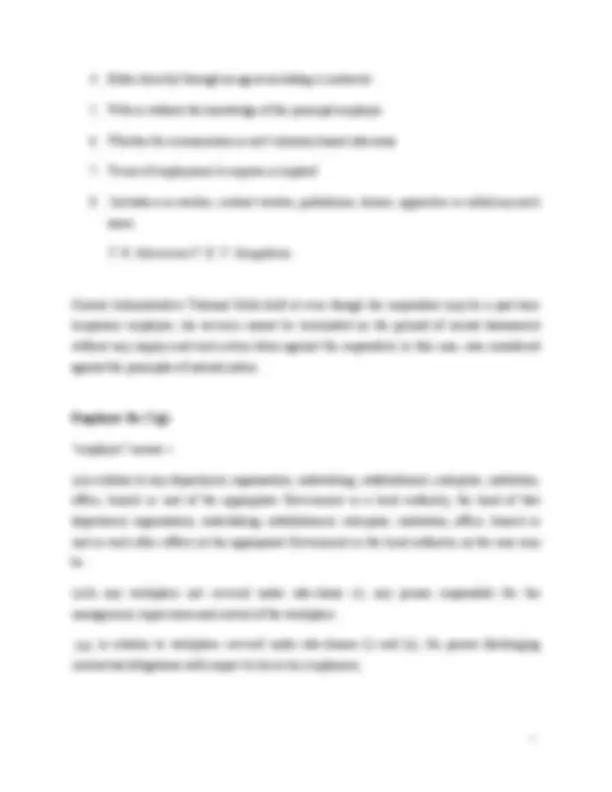

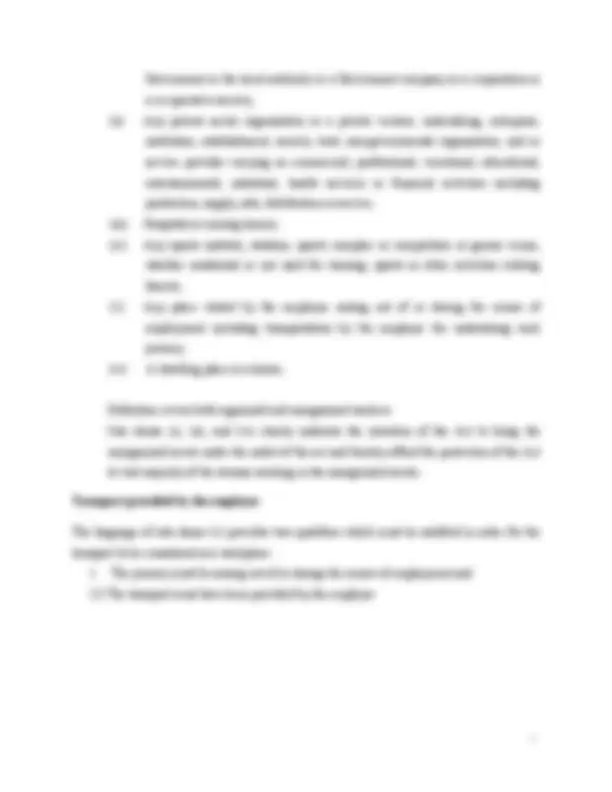


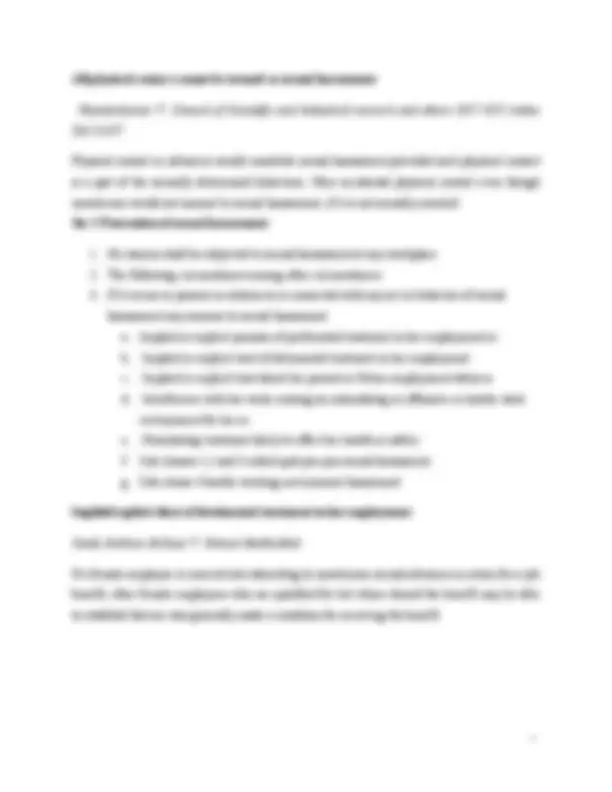

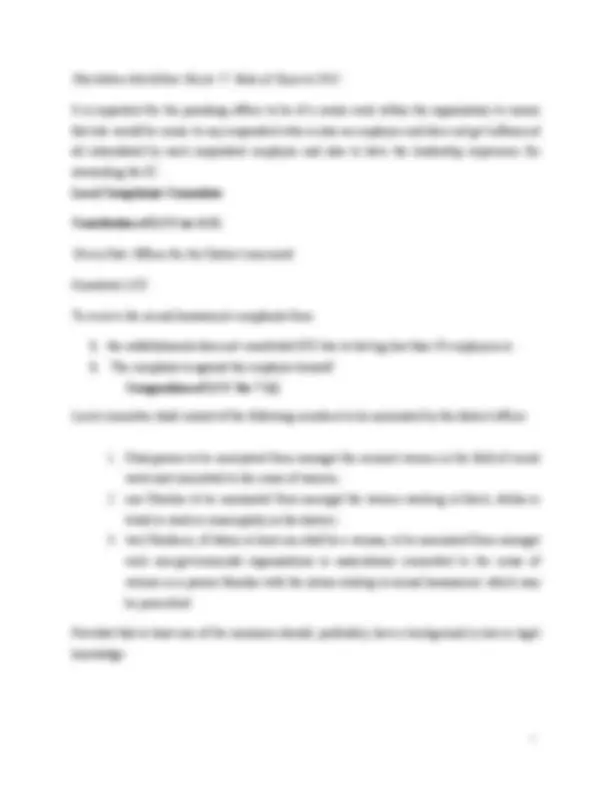






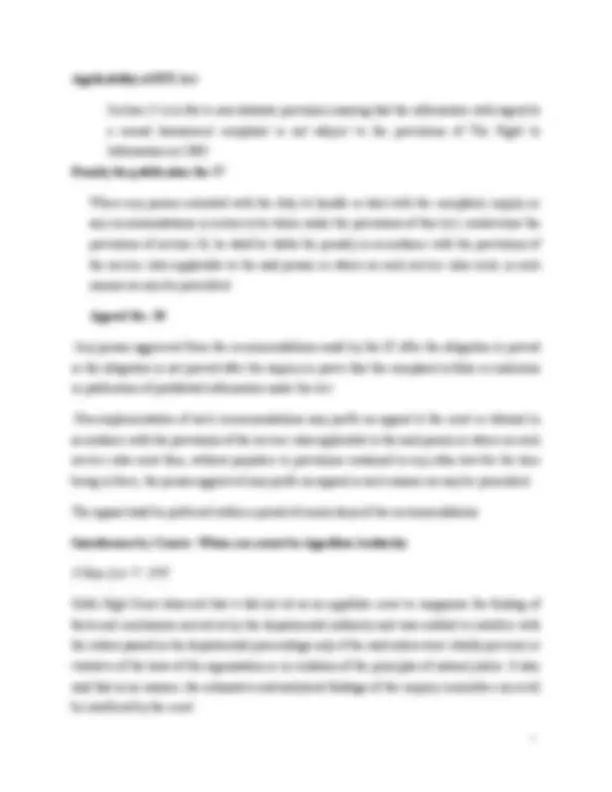


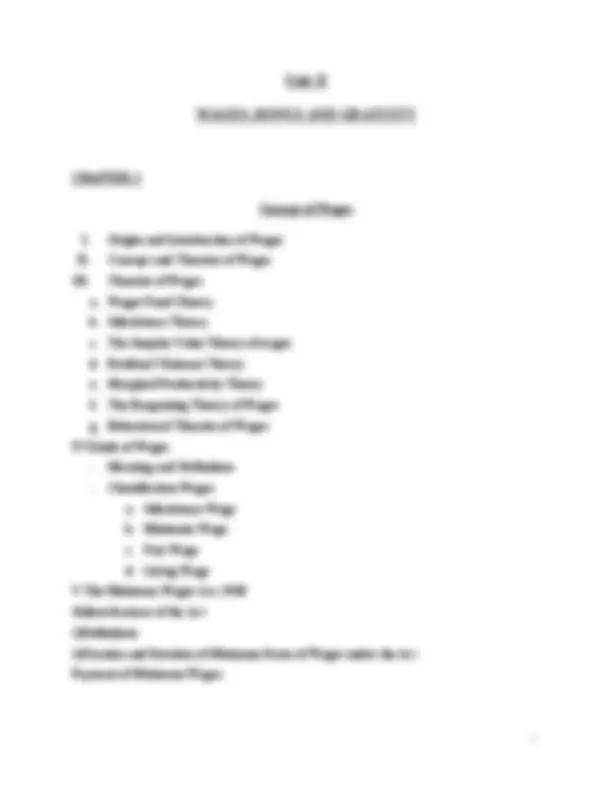
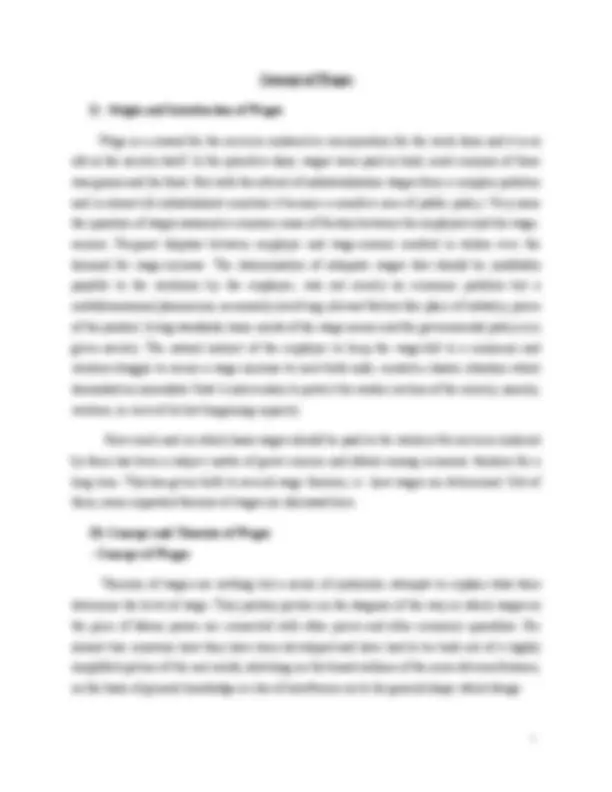
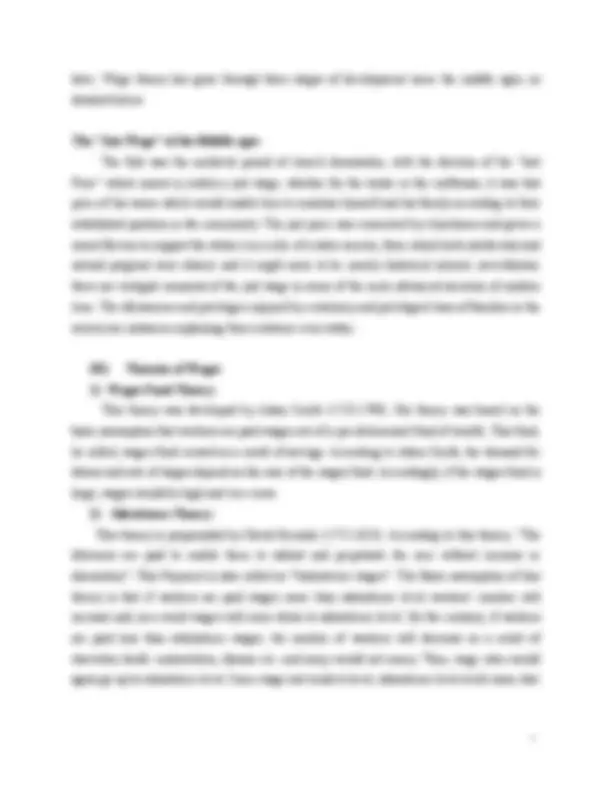

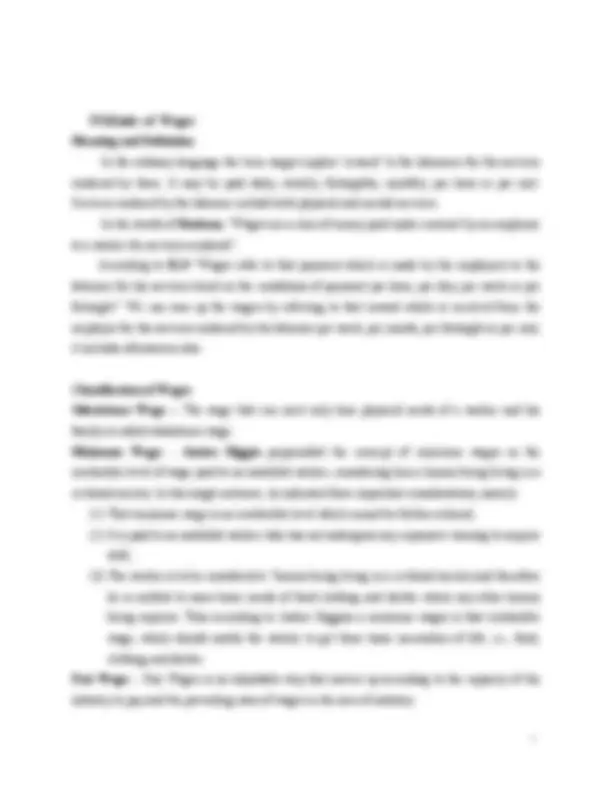
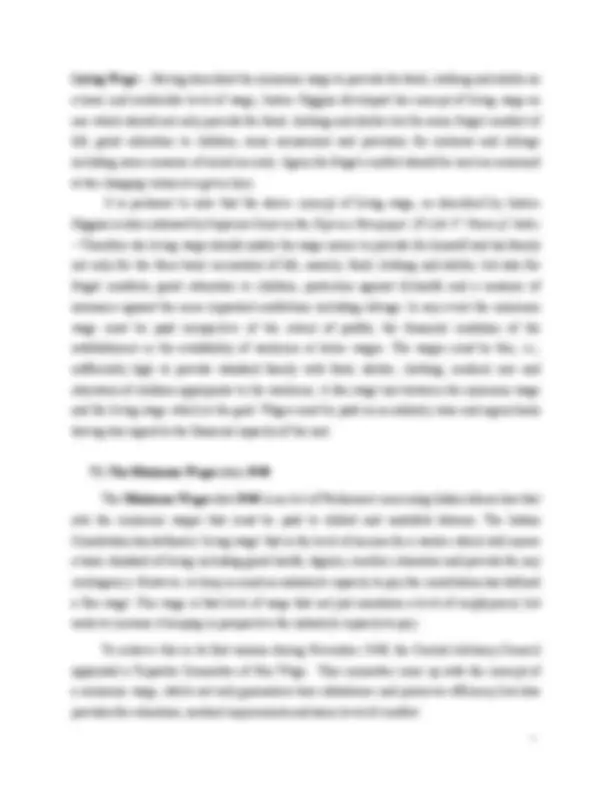
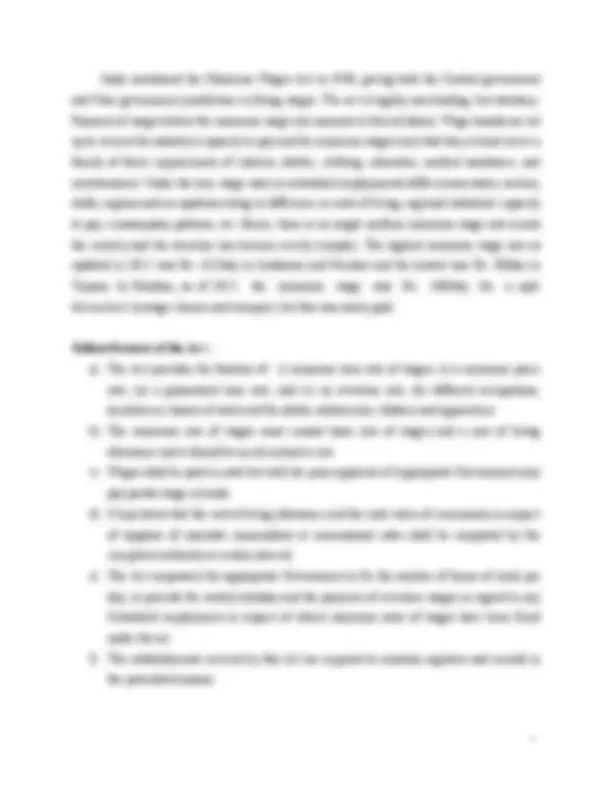
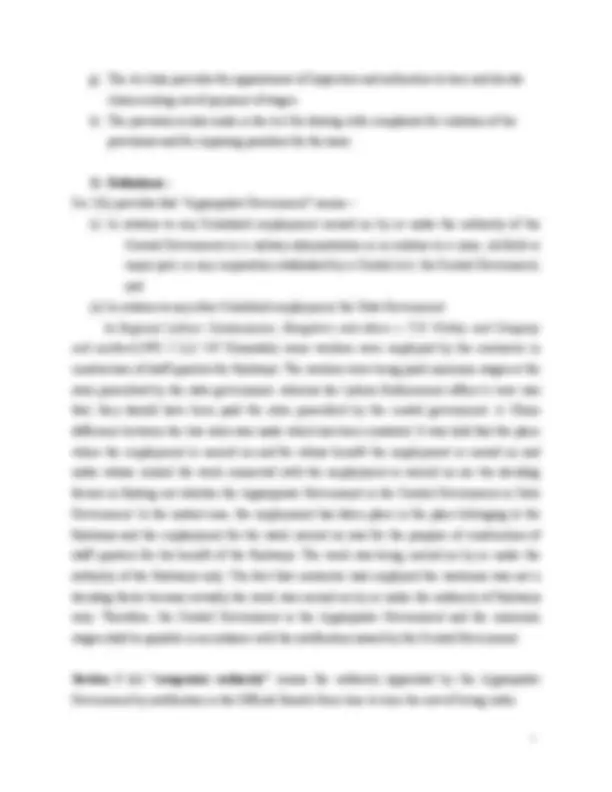

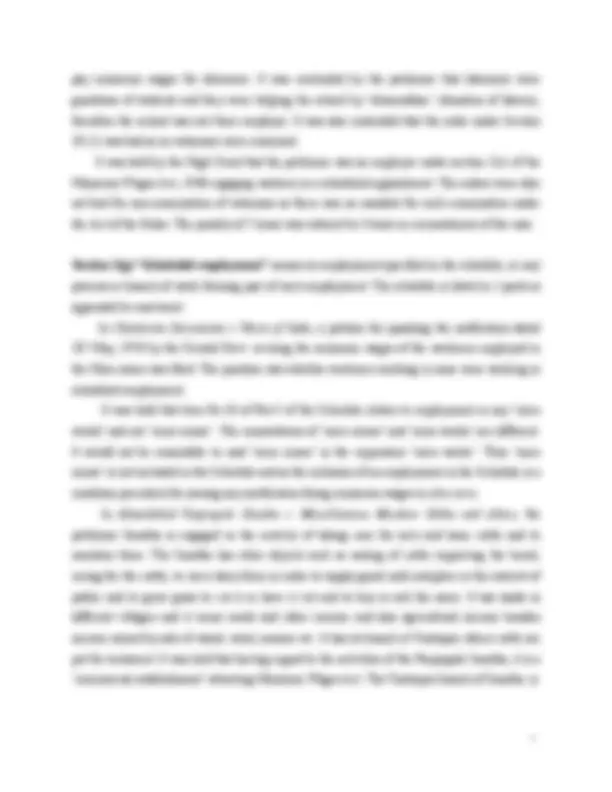
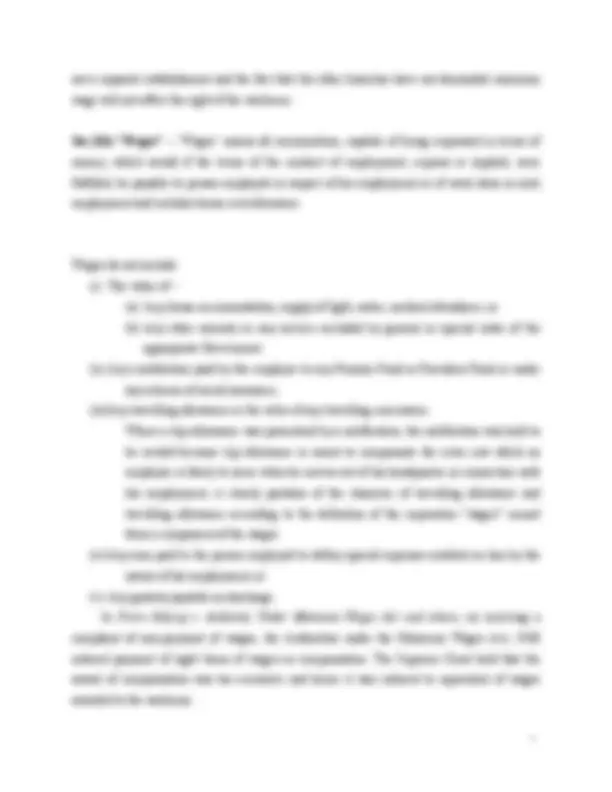
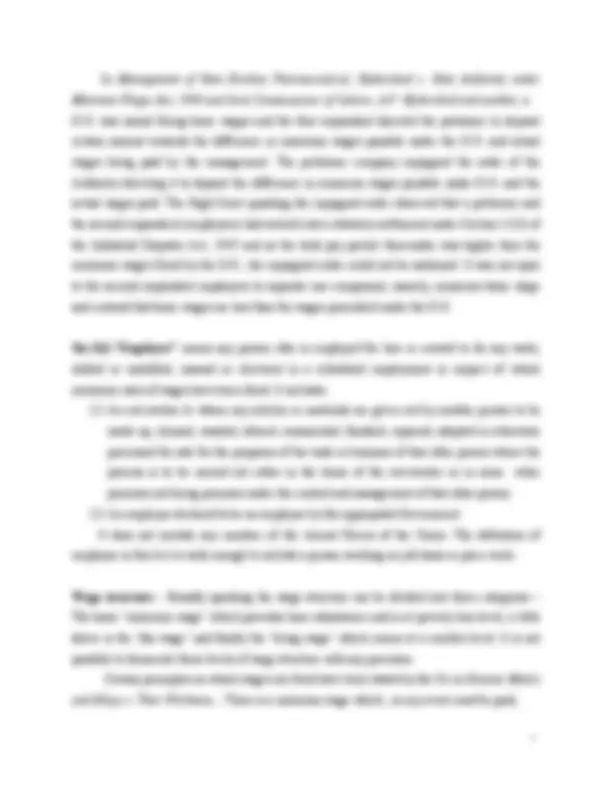

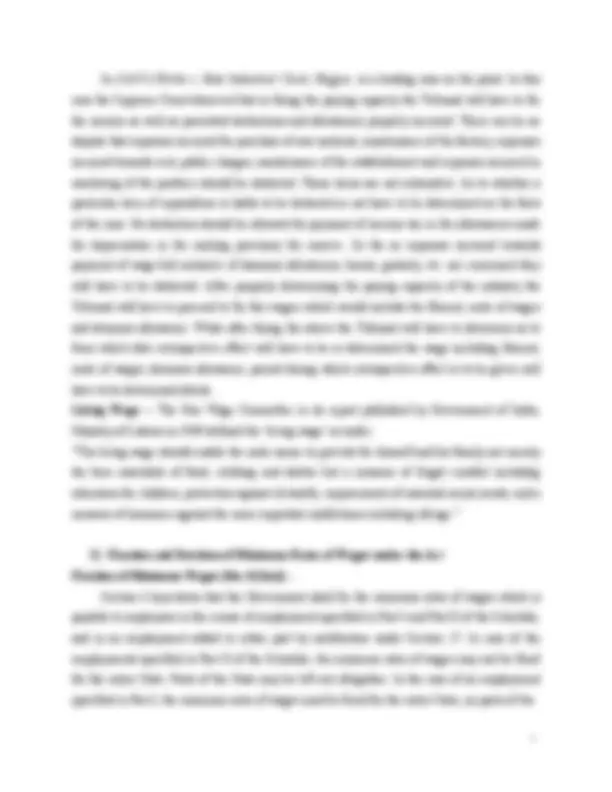

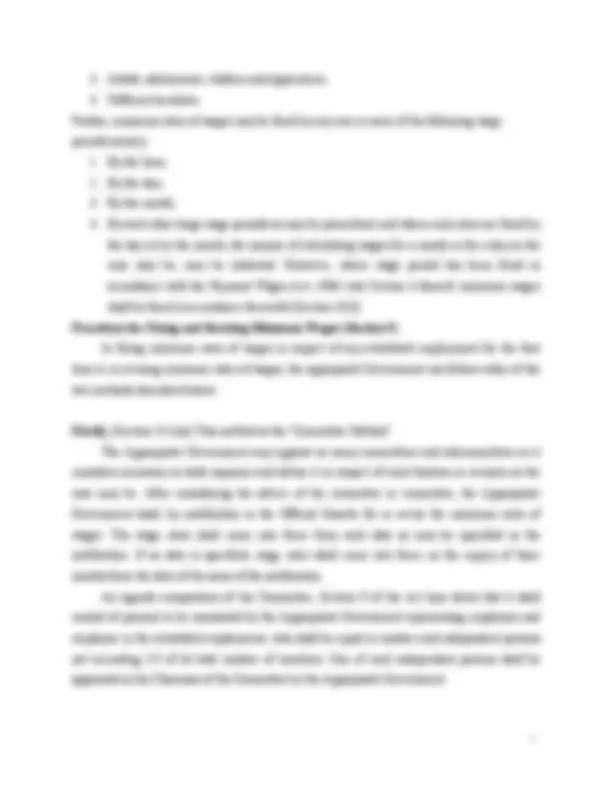
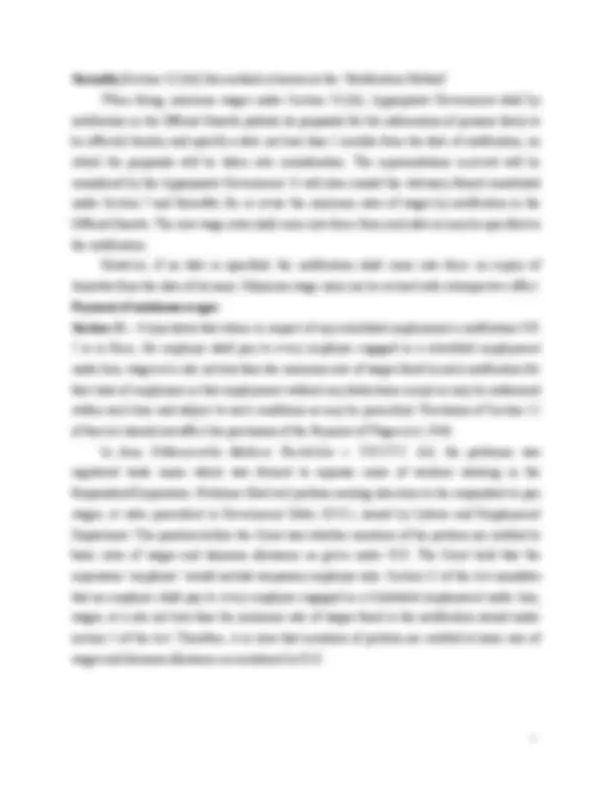

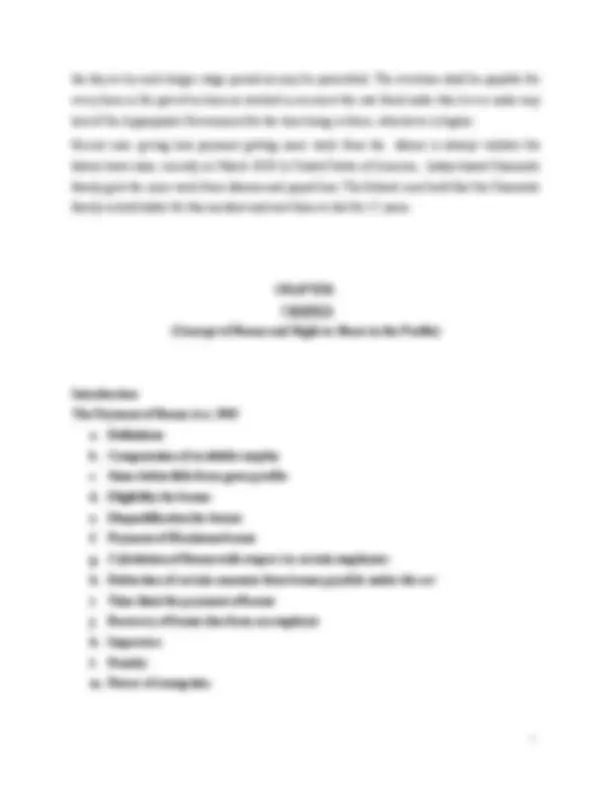
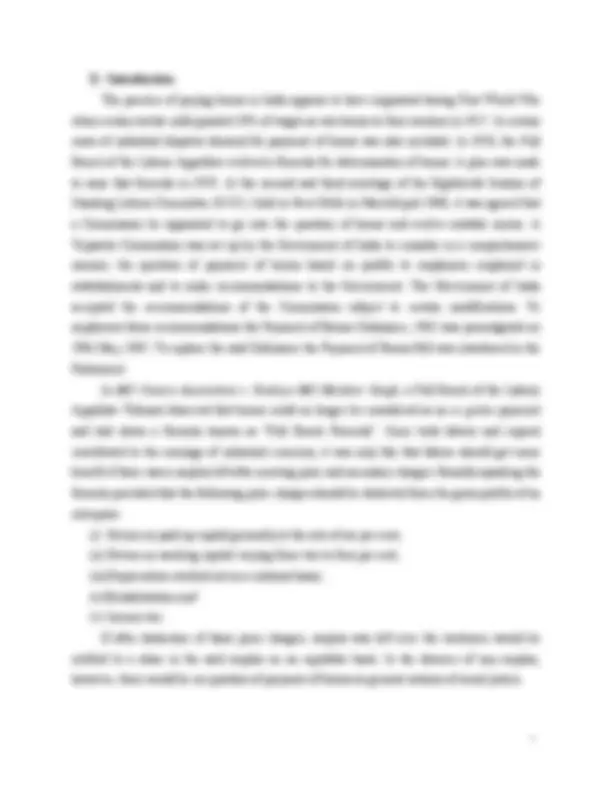



Study with the several resources on Docsity

Earn points by helping other students or get them with a premium plan


Prepare for your exams
Study with the several resources on Docsity

Earn points to download
Earn points by helping other students or get them with a premium plan
Community
Ask the community for help and clear up your study doubts
Discover the best universities in your country according to Docsity users
Free resources
Download our free guides on studying techniques, anxiety management strategies, and thesis advice from Docsity tutors
Complete notes on labour law II with case laws and detailed explanation of the provisions
Typology: Study notes
1 / 191

This page cannot be seen from the preview
Don't miss anything!





























































































(Constituent Colleges: KLE Society’s Law College, Bengaluru, Gurusiddappa Kotambri Law College, Hubballi, S.A. Manvi Law College, Gadag, KLE Society’s B.V. Bellad Law College, Belagavi, KLE Law College, Chikodi, and KLE College of Law, Kalamboli, Navi Mumbai)
Prepared as per the syllabus prescribed by Karnataka State Law University (KSLU), Hubballi
This study material is intended to be used as supplementary material to the online classes and recorded video lectures. It is prepared for the sole purpose of guiding the students in preparation for their examinations. Utmost care has been taken to ensure the accuracy of the content. However, it is stressed that this material is not meant to be used as a replacement for textbooks or commentaries on the subject. This is a compilation and the authors take no credit for the originality of the content. Acknowledgement, wherever due, has been provided.
LABOUR LAW-II
Chapter CONTENTS Page No 1 Labour Welfare and Indian Constitution 2- 2 Bonded Labour System (Abolition ) Act 1976 12- 3 The Equal Remuneration Act, 1976 28- 4 The inter-state Migrant Workmen (Regulations of Employment and Conditions of Service ), Act, 1979,
5 Sexual Harassment of Women at Workplace(Prevention, Prohibition and Redressal ), Act, 2013
Chapter CONTENTS Page No 1 Concept of Wages- Minimum Wages Act 1948 79- 2 Bonus- Payment Bonus Act 97- 3 Gratuity- Payment of Gratuity Act 109-
CHAPTER CONTENTS Page No
activities arose in colonial India in reply to the need for cheap labours. The British government passed legislations which led to the development of the concept of labour welfare in colonial India. The Fatal Accidents Act of 1853 aimed at providing compensation to the families of workmen who lost their lives as a result of an ‘‘actionable wrong.
2. PREAMBLE “The founding fathers of the Constitution cognizant of the reality of life-wisely engrafted the Foundational Rights and Directive Principles... by securing and protecting as effectively as it may, a social order in which justice, social, economic and political shall inform all the institutions of the national life and to minimise the inequalities in income and endeavor to eliminate inequalities in status, facilities and opportunities, not only amongst individuals but also amongst groups of people residing in different areas and engaged in different vocations.”' The preamble of the Constitution, inter alia, seeks to provide:
classification. The decision in Randhir Singh's case has been followed in a number of cases by the Supreme Court. b. Article 19 (1) (c) Art 19 (1) ( c) speaks about the Fundamental right of a citizen to form associations and unions. Under clause (4) of Article 19, however, the State may by law impose reasonable restrictions on this right in the interest of public order or morality or the sovereignty and integrity of India. The right of association pre-supposes organization. It as an organization or permanent relationship between its members in matters of common concern. It thus includes the right to form companies, societies, partnership, trade union, and political parties. The right guaranteed is not merely the right to form association but also to continue with the association as such. The freedom to form association implies also the freedom to form or not to form, to join or not to join, an association or union. In Damayanti v. Union of India The Supreme Court held that "The right to form an association", the Court said, "necessarily 'implies that the person forming the association has also the right to continue to be associated with only those whom they voluntarily admit in the association. Any law by which members are introduced in the voluntary association without any option being given to the members to keep them out, or any law which takes away the membership of those who have voluntarily joined it, will be a law violating the right to form an association". c. Article 23 Article 23 of the Constitution prohibits traffic in human being and beggar and other similar forms of forced labour. The second part of this article declares that any contravention of this provision shall be an offence punishable in accordance with the law. Clause (2) however permits the State to impose compulsory services for public purposes provided that in making so it shall not make any discrimination on grounds only of religion, race, caste or class or any of them. 'Traffic in human beings' means selling and buying men and women like goods and includes immoral traffic in women and children for immoral" or other purposes. Though slavery is not expressly mentioned in Article 23, it is included in the expression 'traffic in human being'.
Under Article 35 of the Constitution Parliament is authorized to make laws for punishing acts prohibited by this Article. In pursuance of this Article, Parliament has passed the Suppression of Immoral Traffic in Women and Girls Act, 1956, for punishing acts which result in traffic in human beings. Article 23 protects the individual not only against the State but also private citizens. It imposes a positive obligation on the State to take steps to abolish evils of "traffic in human beings" and beggar and other similar forms of forced labour wherever they are found. Article 23 prohibits the system of 'bonded labour' because it is a form of forced labour within the meaning of this Article. "Beggar" means involuntary work without payment. What is prohibited by this clause is the making of a person to render service where he was lawfully entitled not to work or to receive remuneration of the services rendered by him. This clause, therefore, does not prohibit forced labour as a punishment for a criminal offence. The protection is not confined to beggar only but also to "other forms of forced labour". It means to compel a person to work against his will. In Peoples Union for Democratic Rights v. Union of India , the Supreme Court considered the scope and ambit of Article 23 in detail. The Court held that the scope of Article 23 is wide and unlimited and strikes at "traffic in human beings" and "beggar and other forms of forced labour" wherever they are found. It is not merely "beggar" which is prohibited by Article 23 but also all other forms of forced labour, "Beggar is a form of forced labour under which a person is compelled to work without receiving any remuneration. This Article strikes at forced labour in whatever form it may manifest itself because it is violative of human dignity and contrary to basic human values. The practise of forced labour is condemned in almost every international instrument dealing with human rights. Every form of forced labour "beggar" or other forms, is prohibited by Article 23 and it makes no difference whether the person who is forced to give his labour or service to another is paid remuneration or not. Even if remuneration is paid, labour or services supplied by a person would be hit By this Article, if it is forced labour, e.g., labour supplied not willingly but as a result of force or compulsion, this Article strikes at every form of forced labour even if it has its origin in a contract voluntarily entered into by the person obligated to provide labour or service. If a person has contracted with another to perform service and there is a consideration for such service. In the shape of liquidation of the debt or even
The rights of freedom of speech, freedom of assembly, and freedom of association, the prohibition of forced labour, employment of children in factories and protection of life and personal liberty, protect some of the vital interests of the workers, Strengthening their hands in forming trade unions, staging demonstrations, and carrying on collective bargaining. The freedom of trade and occupation may presumably be of help principally to the employers. The right to equality, however, protects both capital and labour, though in different ways.
4. DIRECTIVE PRINCIPLES OF STATE POLICY Part IV of the Constitution contains the Directive Principles of State Policy. The provisions contained in this part even though not judicially enforceable but nevertheless fundamental in the governance of the country and it shall be the duty of the state to apply these principles in making laws. Some of these specify the goals and values to be secured by labour legislation for workmen. They are: (i) an adequate means to livelihood; (ii) prevention of the concentration of wealth and means of production; (iii) equal pay for equal work for both men and women; (iv) protection and preservation of the workers’ health; (v) the right to work, the right to education, and the right to public assistance in cases of old age, sickness disablement and in other cases of undeserved want; (vi) just and humane conditions of work and maternity relief; (vii) a living wage, (viii) participation of workers in management and (ix) a decent standard of life. A. Article 39 s pecifically requires the State to direct its policy towards securing the following principles : (a) Equal right of men and women to adequate means of livelihood. (b) Distribution of ownership and control of the material resources of the community to the common good, (c) To ensure that the economic system should not result in the concentration of wealth and means of production to the common detriment. (d) Equal pay for equal work for both men and women.
(e) To protect the health and strength of workers and the tender age of children and to ensure that they are not forced by economic necessity to enter avocations unsuited to their age or strength. (f) That children are given opportunities and facilities to develop in a healthy manner and in conditions of freedom and dignity and that childhood and youth are protected against exploitation and against moral and material abandonment. Clause (f) was modified by the Constitution (42nd Amendment) Act, 1976 with a view to emphasize the constructive role of the State with regard to children. In M. C. Mehta v. State of Tamil Nadu has been held that in view of Art. 39 the employment of children within the match factories directly connected with the manufacturing process of matches" and fireworks cannot be allowed as it is hazardous. Children can, however, be employed in the process of packing but it should be done in the area away from the place of manufacturing to avoid exposure to accidents. In another landmark judgment in M. C. Mehta v. State of T. N. known as (Child Labour Abolition case) a three Judges Bench of the Supreme Court held that children below the age of 14 years cannot be employed in any hazardous industry, or mines or other work. The matter was brought in the notice of the Court by public-spirited lawyer Sri M. C. Mehta through public interest litigation under Art. 32. He told the Court about the plight of children engaged in Sivakasi Cracker Factories and how the constitutional right of these children is guaranteed by Art. 24 was being grossly violated and requested the Court to issue appropriate directions to the Governments to take steps to abolish child labour. Pursuant to Article 39 (d), Parliament has enacted the Equal Remuneration Act, 1976. The directive contained in Article 39 (d) and the Act passed thereto can be judicially enforceable by the court. Randhir .Singh v. Union of lndia, the Supreme Court has held that the principle of "Equal pay for equal work though not a fundamental right" is certainly a constitutional goal and, therefore, capable of enforcement through constitutional remedies under Article 32 of the Constitution. The doctrine of equal pay for equal work is equally applicable to persons employed on a daily wage basis. They are also entitled to the same wages as other permanent employees in the department employed to do identical work. However, the doctrine of 'equal pay for equal
Article 46 enjoins the States to promote with special care the education and economic interest of the weaker sections of the people, and in particular of the Scheduled Castes and Scheduled Tribes, and to protect them from social injustice and of all forms of exploitation. Article 39-A directs the State to ensure that the operation of the legal system promotes justice, on a basis of equal opportunities and shall, in particular, provide free legal aid, by suitable legislation or schemes or in any other way, to ensure that opportunities for securing justice are not denied to any citizen by reason of economic or other disabilities. This article was added to the Constitution pursuant to the new policy of the Government to give legal aid to economically backward classes of people. By and large, industrial legislation has been directed towards the implementation of these directives. The Factories Act, 1948, the Employees’ State Insurance Act, 1948, the Workmen’s Compensation Act, 1948, the Child and Adolescent Labour (Regulation and Abolition) Act and several other labour legislation seek to regulate the employment of women and children in factories and other industrial establishments; the provision of just and humane conditions of work; the protection of health; and compensation for injuries received during work. The Minimum Wages Act provides for the fixation of minimum wages; the Payment of Wages Act regulates wage payment, and the Payment of Bonus Act seeks to bridge the gap between the minimum wage and a living wage. But the directives relating to the distribution of wealth, living wages, and even the equal remuneration and public assistance in cases of undeserved want have not been generally implemented as yet. REFERENCES
Synopsis
**1. Background
expression a wide interpretation to meet the objectives of Article 23. The court held that a person who has been forced to work as a bonded labour and a person who is forced to work at a rate lesser than the minimum wage due to his economic compulsion shall be dealt equally. Under Article 42. Provision for just and humane conditions of work and maternity relief - The State shall make provision for securing just and humane conditions of work and for maternity relief. Under Article 43. A living wage, etc. for workers - The State shall endeavour to secure, by suitable legislation or economic organization or in any other way, to all workers, agricultural, industrial or otherwise, work and living wage, conditions of work ensuring a decent standard of life and full enjoyment of leisure and social and cultural opportunities and, in particular, the State shall endeavour to promote cottage industrial on an individual or co-operative basis in rural areas. Supreme Court in Public Union for Civil liberties V. state of Tamil Nadu , the question regarding rehabilitation of bonded labour. Going through the reports of the National Human Rights Commission and expert group, the supreme court pointed out that the major issue in regard to bonded labour was their rehabilitation. Therefore the court issued directions to the state governments and union territories towards achieving such rehabilitation. Main Features of the Act
This Act is a social welfare legislation providing for socio-economic justice to the weaker section of the society. Definitions “Advance” means an advance, whether in cash or in kind or partly in cash or partly in kind, made by one person (the creditor) to another person the debtor) “ Agreement” means a. an agreement (whether written or oral or partly written and partly oral) b. between a debtor and creditor, and c. includes an agreement providing for forced labour, the existence of which is presumed under any social custom prevailing in the concerned locality. Explanation.—The existence of an agreement between the debtor and creditor is ordinarily presumed, under the social custom, in relation to the systems mentioned under the Act. “ Bonded debt” means an advance obtained or presumed to have been obtained, by a bonded labourer under, or in pursuance of, the bonded labour system; “Bonded labour ” means any labour or service rendered under the bonded labour system; “Bonded labourer ” means a labourer who incurs, or has, or is presumed to have, incurred, a bonded debt; “Bonded labour system” means the system of forced, or partly forced, labour under which a debtor enters, or has, or is presumed to have, entered, into an agreement with the creditor to the effect that,—
(a) make any advance under, or in pursuance of, the bonded labour system, or (b) compel any person to render any bonded labour or other forms of forced labour. On the commencement of the Act, the system of bonded labour is completely abolished and all the bonded labours became free from the obligation to render bonded labour. It also prohibited making advance in pursuance of bonded labour system. The agreement, custom, etc., to be void. — On the commencement of this Act, any custom or tradition or any contract, agreement or other instrument, by virtue of which any person, or any member of the family or dependant of such person, is required to do any work or render any service as a bonded labourer, shall be void and inoperative EXTINGUISHMENT OF LIABILITY TO REPAY BONDED DEBT Liability to repay the bonded debt to stand extinguished.— All bonded debts are deemed to be extinguished
Decree or order deemed to be fully satisfied